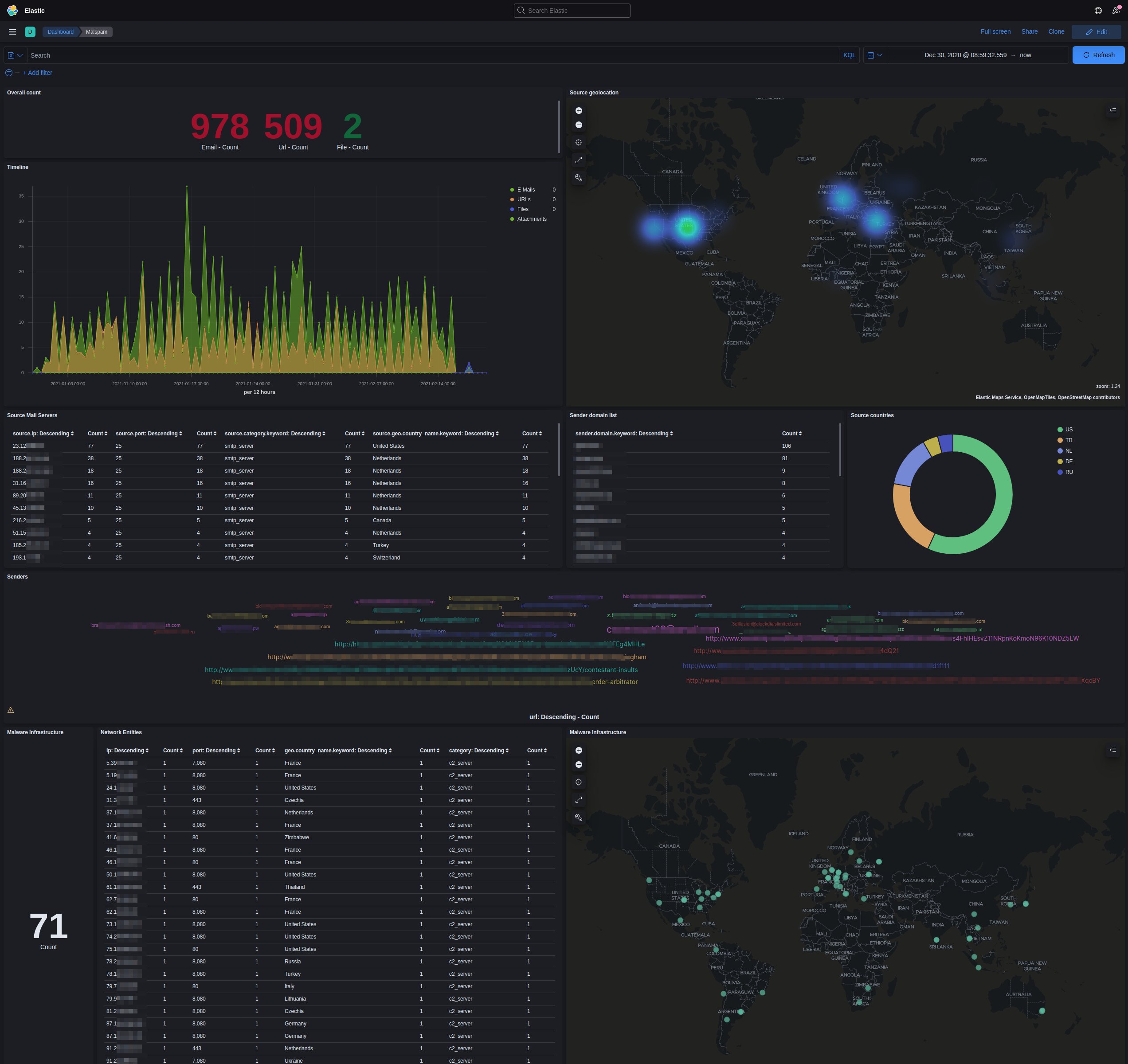Table of Contents
Distributed malspam collection and processing based on (async) Python with connectors to several threat intelligence platforms.
Synopsis
This repository houses a collection of tools to build and run a distributed spamtrap system that is comprised of IMAP- and SMTP-collectors and an analysis backend.
In-depth documentation can be found here: https://jgru.github.io/spamtrap-system/
Motivation
At the time (2022) of writing malspam is the prevalent method of spreading malware. Malspam is defined as follows:
“Malspam, short for malware spam or malicious spam, is spam email that delivers malware. While regular spam is simply any unsolicited email, malspam contains infected attachments, phishing messages, or malicious URLs. It can also deliver a myriad of malware types […].” – Source, accessed 12/07/2022.
Malspam can be considered one of the biggest cyberthreats. In order to be able to acquire and disseminate threat intelligence enabling defenders to mitigate the risks, it is important to collect malspam, form IoCs and map network infrastructure used by malware. The developed spamtrap system helps to streamline the whole process while, it relies on distributed components and the renowned open source tools Cuckoo and Thug.
To the best of our knowledge, there is no pipeline based on open-source tools, which is able to analyze malspam samples and retrieve information about the network infrastructure (more specifically malware distribution sites and command-and-control servers) from end-to-end in an automated manner.
Architecture
Overview
The following figure illustrates the high-level architecture of the system and describes how distributed components interact.
Mail is collected by different collectors which can be deployed in the cloud without much effort. They sent collected messages to a message broker by utilizing the publich-subscribe protocol [Hpfeeds](file://hpfeeds.org/wire-protocol). The backend acts as a subscriber of the Hpfeeds channel in question, in which the spam mails are pushed into. Then, it tokenizes received mails, extracts attachments and downloads files from the URLs, which are mentioned inside the mail body, with the help of the honeyclient Thug (its Python API to be more specific). Archives are extracted, even when locked with a password (if it is mentioned in the mail body), and executable files are then submitted into the open source malware analysis sandbox Cuckoo by using its REST API.
Components
As already mentioned above, the distributed system consists of several
components. For all of these, Dockerfiles (and often docker-compose.yml-files)
are provided.
The code of each component is stored in the respective subdirectories, where the
respective concept, usage and other details are described in the
readme.org-files placed in there.
The project is structured as follows:
.
├── backend # Contains the processing backend
│ ├── config
│ └── processing_backend
├── collectors # Collector code
│ ├── fosr-collector # Fake open relay
│ ├── imap-collector # IMAP retrieval
│ └── smtp-collector # Fake SMTP destination server
├── docs
│ └── img
└── periphery # Contains the peripheral components
├── elasticstack # Reporting/presentation
├── hpfeed-broker-tls # TLS-protected msg broker
└── mongodb # Persistence
Possible Results
Results, like the identified spam SMTP servers, malware distribution sites and command-and-control servers will be extracted and stored in the document store MongoDB. The resuls can then be presented visually with the help of Elasticsearch and Kibana.
The screenshot below illustrates a Kibana dashboard created by collected malspam and the extracted intelligence. Spam senders, misused MTAs, malware distribution sites as well as C&C-servers are shown and presented as actionable threat intelligence.

